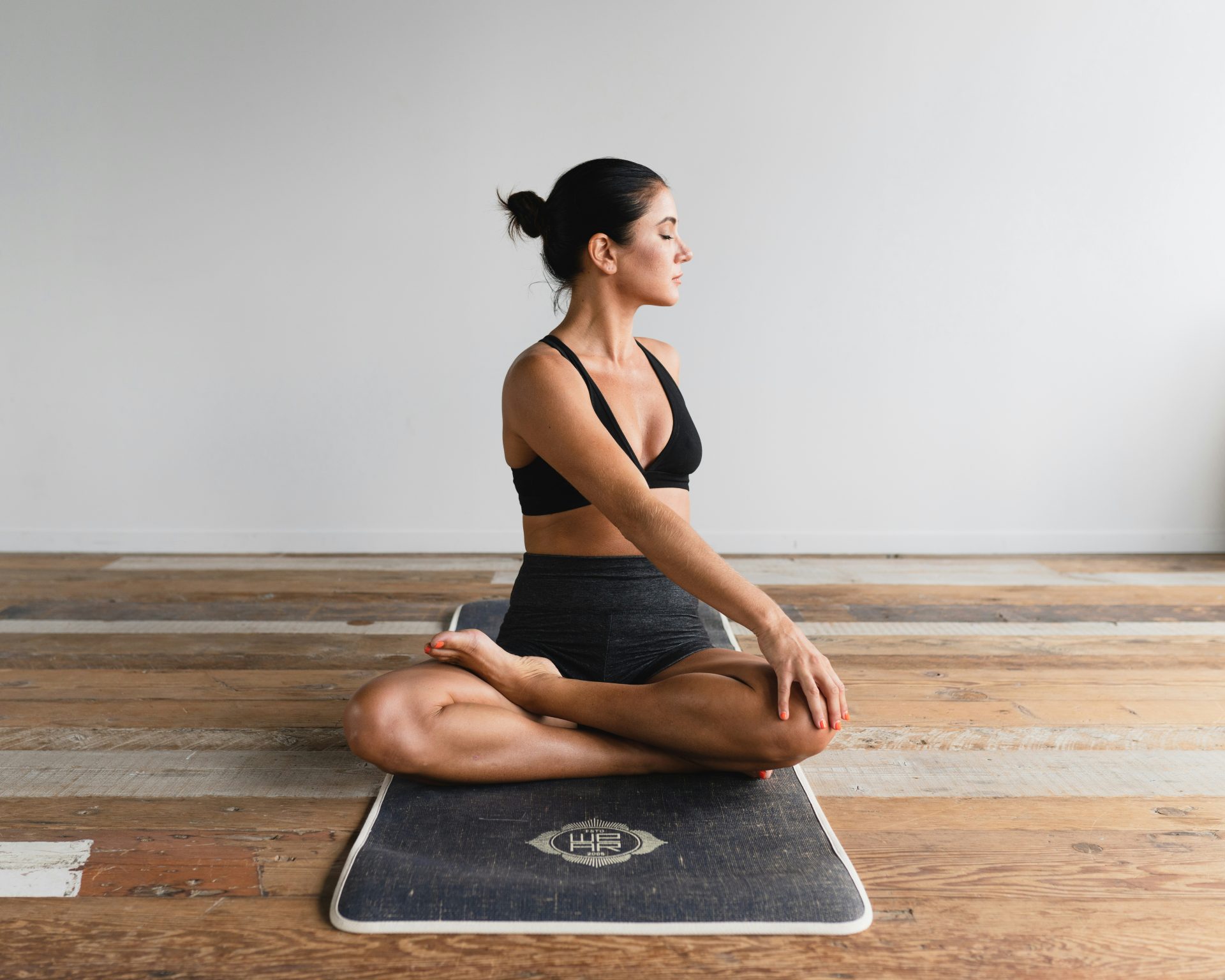Yoga for Inner Peace: Calm and Harmony

Hey there, amazing readers! 🖐️ Just a quick note: yes, we know there are a lot of ads here. Trust us, we get it—it’s not the prettiest look, but they help us keep this blog alive and kicking. Those pesky little ads cover the costs of all the behind-the-scenes magic, from hosting and tech stuff to creating content we hope you’ll love.
We’re committed to delivering quality posts, and your support (even just sticking around despite the ads) means everything to us. So, bear with us, and thanks for helping us keep the good vibes rolling. Now, on to the fun stuff! 😉
TRANSLATE BUTTON AT THE END OF THE ARTICLE
A Quick Overview: Understanding Inner Peace and Harmony
In our fast-paced and often chaotic world, finding inner peace and harmony has become increasingly vital for overall well-being.
Inner peace refers to a state of mental and emotional calmness, free from stress and anxiety.
It is a sense of tranquility that allows one to navigate life’s challenges with grace and mindfulness.
Harmony, on the other hand, involves a sense of balance and unity within oneself.
When we are in harmony, our thoughts, emotions, and actions are aligned, leading to a more fulfilling and purposeful existence.
Yoga, an ancient practice originating in India, has long been revered for its ability to promote inner peace and harmony.
Through a combination of physical postures, breathwork, mindfulness, and meditation, yoga offers a holistic approach to mental well-being.
By incorporating yoga into our daily routine, we can cultivate a sense of calmness, emotional stability, and overall balance in our lives.
Let’s explore the myriad ways in which yoga can help us achieve inner peace and harmony.
Benefits of Yoga for Mental Well-being
Yoga is renowned for its numerous benefits for mental health and overall well-being.
Regular practice of yoga has been shown to reduce stress, anxiety, and depression.
By engaging in yoga, individuals can experience a decrease in the production of stress hormones, such as cortisol, while increasing the release of feel-good neurotransmitters like serotonin and dopamine.
This shift in neurochemical balance leads to improved mood, enhanced emotional resilience, and a greater sense of inner peace.
Moreover, yoga promotes relaxation and helps individuals develop coping mechanisms for dealing with the challenges of daily life.
Through mindful movement and breathwork, yoga teaches practitioners to stay present in the moment, fostering a sense of mindfulness that can alleviate worries about the past or future.
By focusing on the here and now, individuals can experience a profound sense of peace and tranquility that extends beyond the yoga mat and into their everyday lives.
The Role of Yoga in Cultivating Calmness
One of the primary goals of yoga is to cultivate a state of calmness within the practitioner.
Through the practice of asanas (yoga postures) and pranayama (breath control), individuals can release physical tension, quiet the mind, and soothe the nervous system.
Yoga postures are designed to stretch and strengthen the body, promoting flexibility and relaxation.
By linking movement with breath, practitioners can create a meditative flow that fosters a deep sense of peace and inner stillness.
Additionally, the focus on mindfulness in yoga encourages individuals to observe their thoughts and emotions without judgment.
By developing self-awareness and acceptance, practitioners can let go of negative thought patterns and cultivate a more positive mindset.
This shift in perspective allows for greater mental clarity, emotional stability, and a profound sense of calmness that permeates every aspect of life.
How Yoga Promotes Emotional Stability
Emotional stability is a key component of inner peace and harmony, and yoga offers powerful tools for developing this quality.
By connecting the body, mind, and breath, yoga helps individuals regulate their emotions and respond to life’s challenges with equanimity.
Through the practice of mindfulness and meditation, practitioners can cultivate a sense of emotional intelligence that allows them to navigate difficult situations with grace and composure.
Yoga encourages individuals to tune into their inner landscape, becoming aware of their feelings and reactions.
By developing this level of self-awareness, practitioners can identify triggers that lead to emotional distress and learn to respond in a more balanced and constructive manner.
This increased emotional resilience not only promotes inner peace but also fosters healthier relationships and a greater sense of connection with others.
Techniques for Finding Inner Peace through Yoga
Finding inner peace through yoga involves a combination of physical, mental, and spiritual practices that work together to create a sense of harmony within the individual.
One of the most effective techniques for cultivating inner peace is through mindfulness meditation.
By sitting quietly and observing the breath, individuals can cultivate a sense of presence and awareness that leads to a deep sense of inner calm.
Another powerful technique for finding inner peace is through the practice of gratitude.
By focusing on the things we are thankful for, we can shift our perspective from one of lack to one of abundance.
This attitude of gratitude can help us appreciate the beauty in our lives and cultivate a sense of contentment and serenity.
By incorporating these techniques into our yoga practice, we can deepen our connection to ourselves and the world around us, leading to a greater sense of inner peace and harmony.
Creating Harmony Through Yoga Practice
Yoga is a practice that encourages balance and unity within the body, mind, and spirit.
By incorporating elements of physical movement, breathwork, mindfulness, and meditation, individuals can create a sense of harmony that permeates every aspect of their being.
Through the practice of yoga, practitioners can align their thoughts, emotions, and actions, leading to a more integrated and fulfilling life.
One way to create harmony through yoga practice is by setting intentions for each session.
By establishing a clear purpose or goal for your practice, you can align your actions with your values and aspirations.
This sense of intentionality can help you stay focused and present during your practice, leading to a deeper sense of connection and harmony within yourself.
Another way to create harmony through yoga is by cultivating self-compassion and self-love.
By treating yourself with kindness and acceptance, you can create a nurturing environment for growth and healing.
Through practices such as loving-kindness meditation and heart-opening asanas, you can cultivate a sense of compassion that extends not only to yourself but to others as well.
This spirit of generosity and kindness can foster a greater sense of harmony and interconnectedness with the world around you.
Mindfulness and Meditation in Yoga
Mindfulness and meditation are integral components of the yoga practice, helping individuals cultivate a sense of presence, awareness, and inner peace.
Mindfulness involves paying attention to the present moment without judgment, allowing individuals to observe their thoughts, emotions, and sensations with clarity and equanimity.
By practicing mindfulness, individuals can develop a deeper connection to themselves and the world around them, leading to a greater sense of peace and harmony.
Meditation, on the other hand, involves focusing the mind on a single point of attention, such as the breath or a mantra.
By cultivating a sense of concentration and stillness, individuals can quiet the chatter of the mind and experience a profound sense of inner calm.
Meditation helps individuals access a state of deep relaxation and insight, allowing them to unravel the complexities of their inner world and find a sense of peace that extends beyond the mat.
Breathing Exercises for Inner Peace
Breathwork, or pranayama, is a fundamental aspect of the yoga practice that can help individuals find inner peace and harmony.
By regulating the breath, individuals can calm the nervous system, reduce stress, and promote a sense of relaxation and well-being.
There are various breathing exercises in yoga that can be practiced to cultivate inner peace and balance.
One of the most common breathing exercises in yoga is deep belly breathing, also known as diaphragmatic breathing.
This technique involves breathing deeply into the belly, allowing the diaphragm to expand and contract fully.
By focusing on the breath and extending the exhalation, individuals can activate the body’s relaxation response, leading to a sense of calmness and tranquility.
Another effective breathing exercise for inner peace is alternate nostril breathing, or Nadi Shodhana.
This practice involves breathing through one nostril at a time, alternating between the left and right sides.
Nadi Shodhana helps balance the energy channels in the body, promote mental clarity, and create a sense of harmony and balance within the individual.
By incorporating these breathing exercises into your yoga practice, you can deepen your connection to the breath and cultivate a profound sense of inner peace.
Yoga Poses for Calmness and Balance
Yoga poses, or asanas, play a crucial role in promoting calmness and balance within the body and mind.
Certain yoga poses are particularly effective at reducing stress, anxiety, and promoting a sense of equilibrium.
By practicing these poses regularly, individuals can release physical tension, quiet the mind, and cultivate a deep sense of inner peace.
Some yoga poses that are known for their calming and balancing effects include:
Child’s Pose (Balasana): This gentle resting pose helps release tension in the back, shoulders, and hips, promoting relaxation and tranquility.
Legs Up the Wall Pose (Viparita Karani): By elevating the legs above the heart, this pose can help reduce stress and anxiety, promote circulation, and induce a sense of calmness.
Corpse Pose (Savasana): The final resting pose in a yoga practice, Savasana allows the body and mind to fully relax, promoting deep rest and rejuvenation.
Cat-Cow Pose (Marjaryasana-Bitilasana): This dynamic flow between Cat and Cow poses helps release tension in the spine, improve flexibility, and create a sense of balance and harmony.
Standing Forward Bend (Uttanasana): By folding forward and surrendering to gravity, this pose can help calm the mind, release tension in the back and hamstrings, and promote a sense of peace and relaxation.
By incorporating these calming and balancing yoga poses into your practice, you can cultivate a greater sense of inner peace and harmony, both on and off the mat.
Incorporating Yoga into Daily Routine
Integrating yoga into your daily routine is a powerful way to promote inner peace, harmony, and overall well-being.
By setting aside just a few minutes each day to practice yoga, you can reap the numerous benefits that this ancient discipline has to offer.
Whether you prefer to practice in the morning to start your day on a peaceful note or in the evening to unwind and relax, finding a consistent time that works for you is key to making yoga a regular part of your life.
One way to incorporate yoga into your daily routine is by starting with a short morning routine that includes gentle stretches, breathing exercises, and mindfulness practices.
This can help you set a positive tone for the day ahead, promoting a sense of calmness and presence that carries through your daily activities.
In the evening, you can wind down with restorative yoga poses, meditation, and deep breathing exercises to relax the body and quiet the mind before bedtime.
By making yoga a priority in your daily routine, you can create a sense of structure, balance, and harmony in your life.
Whether you practice for just a few minutes each day or engage in longer sessions several times a week, the key is to make time for yourself and your well-being.
By nurturing your body, mind, and spirit through the practice of yoga, you can cultivate a deep sense of inner peace and harmony that will enrich every aspect of your life.
Overcoming Stress and Anxiety with Yoga
Stress and anxiety are pervasive in today’s society, impacting millions of individuals worldwide.
Yoga offers a powerful antidote to these common mental health challenges, providing effective tools for managing stress, reducing anxiety, and promoting emotional well-being.
By incorporating yoga into your routine, you can cultivate a sense of inner peace, resilience, and balance that can help you navigate life’s challenges with greater ease and grace.
One of the ways yoga helps individuals overcome stress and anxiety is by activating the body’s relaxation response.
Through mindful movement, breathwork, and meditation, yoga can help regulate the nervous system, reduce the production of stress hormones, and promote a state of deep relaxation.
By practicing yoga regularly, individuals can learn to release tension, quiet the mind, and find a sense of calmness and tranquility in the midst of stressors.
Moreover, yoga encourages individuals to cultivate a sense of self-compassion and self-care, which are essential for overcoming stress and anxiety.
By treating yourself with kindness, acceptance, and love, you can create a nurturing environment for healing and growth.
Through practices such as loving-kindness meditation, gratitude journaling, and heart-opening yoga poses, you can develop a deeper connection to yourself and others, fostering a sense of peace, harmony, and well-being.
Conclusion: Embracing Inner Peace through Yoga
In conclusion, yoga offers a powerful pathway to inner peace, calmness, and harmony.
By incorporating elements of physical movement, breathwork, mindfulness, and meditation into your daily routine, you can cultivate a profound sense of well-being that extends beyond the mat and into every aspect of your life.
From reducing stress and anxiety to promoting emotional stability and balance, yoga provides a holistic approach to mental health that can help you navigate life’s challenges with grace and resilience.
By practicing yoga regularly, setting intentions for your practice, cultivating mindfulness and self-compassion, and incorporating breathing exercises and calming poses into your routine, you can unlock the secrets to inner peace and harmony.
Through yoga, you can unravel the complexities of your inner world, find a sense of balance and unity within yourself, and experience a deep connection to the world around you.
Embrace the transformative power of yoga and discover the profound peace and harmony that lie within you.

The Enlightenment Journey is a remarkable collection of writings authored by a distinguished group of experts in the fields of spirituality, new age, and esoteric knowledge.
This anthology features a diverse assembly of well-experienced authors who bring their profound insights and credible perspectives to the forefront.
Each contributor possesses a wealth of knowledge and wisdom, making them authorities in their respective domains.
Together, they offer readers a transformative journey into the realms of spiritual growth, self-discovery, and esoteric enlightenment.
The Enlightenment Journey is a testament to the collective expertise of these luminaries, providing readers with a rich tapestry of ideas and information to illuminate their spiritual path.
Our Diverse Expertise 🌟
While our primary focus is on spirituality and esotericism, we are equally passionate about exploring a wide range of other topics and niches 🌍📚. Our experienced team is dedicated to delivering high-quality, informative content across various subjects ✨.
To ensure we provide the most accurate and valuable insights, we collaborate with trusted experts in their respective domains 🧑🏫👩🏫. This allows us to offer well-rounded perspectives and knowledge to our readers.
Our blog originally focused on spirituality and metaphysics, but we’ve since expanded to cover a wide range of niches. Don’t worry—we continue to publish a lot of articles on spirituality! Frequently visit our blog to explore our diverse content and stay tuned for more insightful reads.






